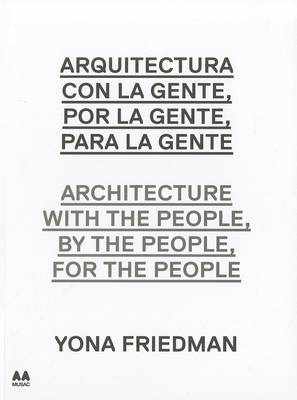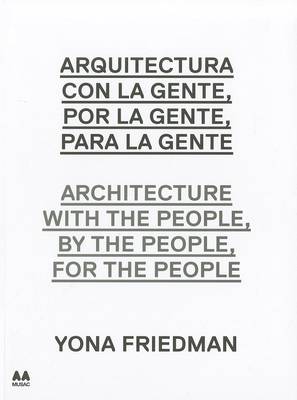
Bedankt voor het vertrouwen het afgelopen jaar! Om jou te bedanken bieden we GRATIS verzending (in België) aan op alles gedurende de hele maand januari.
- Afhalen na 1 uur in een winkel met voorraad
- In januari gratis thuislevering in België
- Ruim aanbod met 7 miljoen producten
Bedankt voor het vertrouwen het afgelopen jaar! Om jou te bedanken bieden we GRATIS verzending (in België) aan op alles gedurende de hele maand januari.
- Afhalen na 1 uur in een winkel met voorraad
- In januari gratis thuislevering in België
- Ruim aanbod met 7 miljoen producten
Zoeken
Arquitectura Con la Gente, Por la Gente, Para la Gente/Architecture With The People, By The People, For The People
Yona Friedman
€ 55,45
+ 110 punten
Omschrijving
This monograph, second in the collection featuring artists and architects who maintain a critical view of the contemporary world, is devoted to the distinguished Hungarian architect, living and working in Paris, Yona Friedman. Yona Friedman's work spans urban models, theoretical texts and animated films. He has participated in several biennial art exhibitions, including Shanghai, Venice and Documenta 11. His visionary, ground-break- ing ideas have been at the forefront for several generations of architects and urban planners, and have clearly influenced the likes of Kenzo Tange, Arata Isozaki or Bernard Tschumi.
While Friedman is still active and remains socially committed, his most important ideas stem from the fifties and sixties. In 1956, he published his "Manifeste de l'architecture Mobile," which set an urban structure on piles suitable for areas where building had not been not possible. This text was in turn used as the founding document of the Groupe d'e?tude d'architecture mobile (GEAM). He developed urban concepts such as La ville spatiale--the Spatial City where dwellings are freely distributed by the citizens thanks to low-cost, reusable mobile models. In 1965, along with Ionel Schein, Walter Jonas and others, he founded the Groupe International d'Architecture Prospective (GIAP).
While Friedman is still active and remains socially committed, his most important ideas stem from the fifties and sixties. In 1956, he published his "Manifeste de l'architecture Mobile," which set an urban structure on piles suitable for areas where building had not been not possible. This text was in turn used as the founding document of the Groupe d'e?tude d'architecture mobile (GEAM). He developed urban concepts such as La ville spatiale--the Spatial City where dwellings are freely distributed by the citizens thanks to low-cost, reusable mobile models. In 1965, along with Ionel Schein, Walter Jonas and others, he founded the Groupe International d'Architecture Prospective (GIAP).
Specificaties
Betrokkenen
- Auteur(s):
- Uitgeverij:
Inhoud
- Aantal bladzijden:
- 160
- Taal:
- Engels
- Reeks:
Eigenschappen
- Productcode (EAN):
- 9788492861941
- Verschijningsdatum:
- 1/09/2011
- Uitvoering:
- Paperback
- Formaat:
- Trade paperback (VS)
- Afmetingen:
- 203 mm x 269 mm
- Gewicht:
- 748 g

Alleen bij Standaard Boekhandel
+ 110 punten op je klantenkaart van Standaard Boekhandel
Beoordelingen
We publiceren alleen reviews die voldoen aan de voorwaarden voor reviews. Bekijk onze voorwaarden voor reviews.









